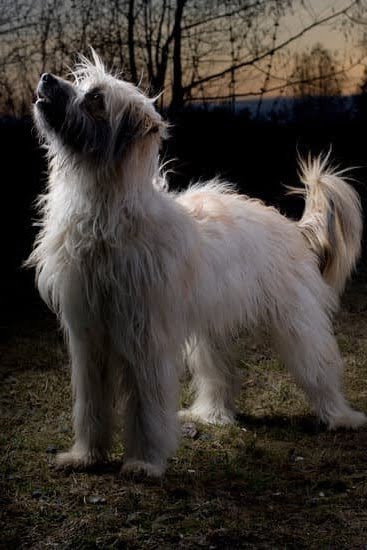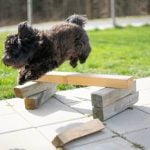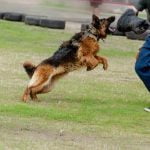Introduction to Sled Dog Training
The most effective way to train sled dogs is by instilling a drive for accomplishment and consistency. The goal is not just conditioned responses when given commands, but also the development of confident and well-motivated dogs that have an understanding of the basics of pulling, maneuvering, and racing.
Equipment: Properly outfitting your team is essential for success in sled dog training. At a minimum, you’ll need to purchase collars, harnesses, ganglines (whip lines), supplemental lines (if needed for additional security), drag mats or pads, booties, backpacks (for carrying food during races or excursions), water bowls, water buckets and mushers’ bags (to store key items).
Training Techniques: There are several different training techniques that you can utilize to ensure your team is prepared to race. Before going into each technique in detail it’s important to understand the basics. All sled dog teams should start off running on a flat surface so they can learn proper commands and develop a foundation in basic obedience skills before tackling hilly terrain or terrain with hazards. Once this has been established you can gradually challenge your team by introducing obstacles such as hillsides, curves and shallow water to really get them ready for racing conditions. You’ll also want to train your team on different types of snow conditions including icy wind trails and powdery snowdrifts so they know how the environment will affect their performance during a race.
Areas of Knowledge Required: In order for your team to be successful it’s important that you have an understanding of canine anatomy & physiology so you can accurately gauge their endurance level as well as detect any strain/injury before it becomes a problem during training or competition. Additionally knowledge about animal health & nutrition is essential as proper nutrition plays an integral part in achieving peak performance from your canine athletes. Finally having access to information about equipment maintenance such as replacing worn out harnesses or tightening kinked lines should be something all mushers make themselves aware of prior to competition season.
Safety Considerations: Safety is paramount when training sled dogs which means taking steps such as keeping unsupervised puppies away from sharp objects/cliffs/holes which could cause injury and wearing proper safety clothing/gear while accompanying your team on runs – think helmet, boots/snowshoes/skis if needed, cold weather gear etc). Additionally you’ll want to ensure both yourself & your dogs are vaccinated against rabies prior to participating in events held both domestically and internationally where exposure could be greater than usual due to different environmental conditions arising from travel.
Preparing Your Dog
When preparing your sled dogs, it is important to first evaluate their individual traits and behaviors. This can help determine which types of breeds, and even specific breeds, are most suitable for sledding. You should take into account any preexisting conditions (such as hip dysplasia or allergies), as well as the dog’s age and size. By sourcing the right breed through reputable breeders or rescues, you can ensure that they are up-to-date on health screenings and vaccinations.
Once you’ve settled on a breed, it is important to familiarize yourself with the peculiarities of the dog’s body in order to develop an optimal training plan. This could include getting used to wearing a sled harness, lifting their feet correctly when necessary, and even tentative aerodynamic maneuvers for improved traction. Additionally, consider dietary requirements since your dogs will be expending a lot of energy during training sessions and races – essential fatty acid supplements may be beneficial here!
By evaluating each of your dogs’ individual physical needs as well as personality traits, creating a training plan tailored towards each animal specifically becomes much easier, ultimately leading to long-term success in sledding activities.
Getting to Know Your Dog
One of the most important parts of sled dog training is building trust and a positive learning environment between your dog and you. This will help ensure safe and effective training sessions by preventing any form of aggression or reluctance from your dog.
To build trust with your pup, start by getting to know them. Spend time playing games, such as hide-and-seek or fetch, which both you and your dog can enjoy together. By engaging in these types of activities, you can help establish trust with them and make the relationship even stronger.
During training sessions, be sure to pay close attention to your dog’s body language so that you can better understand their behavior. Look for signs of stress and anxiety, such as lip licking or excessive panting, which may indicate they need a break or that they’re feeling overwhelmed by a task. Creating a sense of safety and security through physical contact can also be helpful in calming your pet; this doesn’t need to take the form of hugs—simply petting them lightly on the back while they work may do wonders in easing their nerves!
Establishing Basic Commands
Training your sled dogs to respond to basic commands requires consistent and repetitive instruction. Start by picking a word or phrase that will signal the desired behavior you wish to train in the dog, such as “sit” or “stay,” and repeat it every time you want them to perform that action. It is important to remain positive with your tone and remember that training should be enjoyable for both you and the dogs.
When you want the sled dog to sit, stand in front of the dog and place a treat on their nose. As soon as they sit down, say your command and immediately give them the treat. Repeat this process multiple times so the sled dog begins to understand what is expected from their action of sitting down.
When teaching them “come,” stand 10-15 feet away from your pup holding a treat in one hand while extending your other arm out with your palm facing up, have somebody else hold onto their collar. Use an enthusiastic and inviting tone when saying “come” then give them feedback with a treat when they come running over towards you.
Finally, ensure practice makes perfect; repetition of these commands (as well as any others) is key! Every time they obey their command reward them with a tasty bite! This will help reinforce positive habits and create strong connections between commands and actions which will eventually lead to good sledge dog behavior!
Teaching Advanced Commands
Lead
The ‘lead’ command is used to direct the dogs in the direction you would like them to go. As with all commands, start with shorter distances at a slower pace before moving on to longer distances and faster speeds. Start by having your dog walk next to you and give the ‘lead’ command. When giving this command, make sure you are walking ahead at a comfortable distance for the dog and gently pulling the tugline (harness) of the lead dog forward whenever necessary. Always maintain the same speed as your dog so it knows what is expected from it. Also, remember to give rewards when your dog gets it right and stops or comes back when called.
Stay Low
The ‘stay low’ command is used when sledding in steep terrain or high winds where maintaining stability is of utmost importance. To teach this command, show your dogs how you want them to move: slowly and steadily decreasing their speed as they approach inclines or crests while keeping their bodies levelled closer to the ground so they can keep balance more effectively throughout a bounce or turn. Use verbal cues such as “easy” and “level” in combination with verbal corrections if needed (e.g., firm stop). Show that slow is steady, as well as desirable behavior by rewarding good performance with treats and praise every time they master a slope successfully!
Hike
The ‘hike’ command means quickly increasing their speed up an incline, achieving short bursts of power while taking hills cautiously but maintaining momentum on flatter sections of trail. There’s no set criteria for teaching this particular skill, although here are a few tips: Give the command with enthusiasm using plenty of energy; use voice tones appropriate for different surfaces (higher for snow conditions versus lower for solid ice); have patience since over-correcting or punishing them harshly will only confuse them; incorporate play into training session between drills; and provide simple directions—let them know exactly how far ahead they should be going before issuing each new instruction. Finally, reward excellence routinely! Be generous with praise once they get it right – they’ll love it!
Speed and Distance Control
Maintaining consistent speed over varied terrain takes practice because there’s no single speed that works in all scenarios—it depends on surface type, trends in elevation changes, obstacles like tight turns, etc.. To teach this skill start by introducing various commands like “slow” & “fast’ alongside hand gestures or tugging/releasing harness line pressure points to help adjust pace accordingly during training runs around trails features you are familiar with and have walked several times prior. Additionally consider adding obstacles such as logs or varying terrain challenges (upgrades and declines) so that dogs develop an understanding that no matter what kind of terrain currently exists below their paws – their job remains unchanged: stay focused on handler & pull at correct velocity regardless of external stimuli influencing traction & stability issues while moving forward efficiently & safely towards destination/finish line together!
Focus on Handler
No amount of technical knowledge matters if your sled dogs do not learn how important it is to focus on their handler throughout each run – which requires a high level of trust by holding steady eye contact between team leader & running mates while out on trail embracing adrenaline fueled moments peaking at teammate requests not otherwise spoken out loud through tone inflections heard only two parties exchanging silent telepathy clairvoyantly piecing code together non verbally but understood mutually across unspoken communication channels connecting humans directly alongside loyal canine companions ephemerally yet hopefully without fail!
Putting It All Together
Once you have taught all your commands and basic techniques to your sled dogs, it’s time to introduce the activities they will actually be doing in races, such as jumps, loops and other complex activities. To begin, you should start with simple things like sending them around a curve or having them make a jump. This can be done easily by adding an additional lead dog or by simply sending them one command at a time. Make sure each command is clear and distinct so that your team does not become confused.
For more complex maneuvers, start slow and get your team used to the idea of doing multiple commands in sequence with other members of their pack. Practice sending them around curves and over jumps until they are comfortable and understand what they need to do. Then gradually increase speeds and complexity while checking on their reactions to ensure their understanding of the activity. Utilize whistle commands as well as vocal instructions so that they learn to recognize and respond swiftly when you give a command before moving on to any further complicated movements.
It is also helpful to map out different elements within the run so that everyone can see the plan clearly from start to finish and how each piece fits together during practice sessions. With enough practice, eventually your team will be ready for races or other competitive sledding events with confidence.
Conclusion
Sled dog training is a rewarding and challenging adventure for owners, dogs, and mushers alike. It takes knowledge, patience, and preparation to ensure that the sled dogs are prepared for the track. First and foremost, it’s important to make sure that your sled dogs are in good health, by adequately feeding them and providing them with essential dental and medical care. Second, get familiar with your breed of choice as each breed has its own unique traits. Examples of breeds would include Alaskan huskies, Canadian Eskimo dogs, Greenland dogs, Siberian huskies, Samoyeds etc.. Third it is important to provide positive reinforcement during training so the canines develop trust and form a bond with the musher; rewards such as treats or verbal encouragement can go a long way. Finally, don’t forget to enjoy the beauty of sled dog racing – of course results matter but also savor the joy that comes from experiencing nature as well as satisfaction in learning how to work together with your sled dog team.
To further enhance the training process of your sled dogs there are resources online and tutorials available through social media outlets like YouTube or Vimeo. Additionally doing research on other successful mushers and their methods is always worthwhile; reading professional books from those who have devoted time towards garnering experience in this particular field are invaluable (Ahlstrom et al., 2011). Ultimately what will help you become better at training your sled dog team is trial and error – use health measures when needed ,learn from past experience ,and remember to keep some distance between yourself .and the pack – ultimately enjoying the whole journey is key!

Welcome to the blog! I am a professional dog trainer and have been working with dogs for many years. In this blog, I will be discussing various topics related to dog training, including tips, tricks, and advice. I hope you find this information helpful and informative. Thanks for reading!





